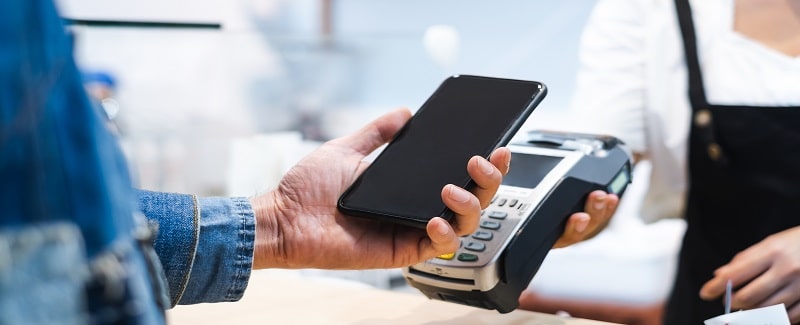The Battle for the Mobile Payments Space
Posted by Prasanth Varma and Manish Gurukula on 25 Jul 2016


The battle for the mobile payments space is a complex one involving a number of participants and interests. What we are seeing here is not just the expansion of the payments ecosystem, but the creation of a new one that opens the door for innovation and disruption. With so much at play, the very nature of the mobile payments ecosystem makes it impossible to be a zero-sum game. But why hasn’t a clear market leader emerged yet? Let’s take a look at the various players in the ecosystem and the expectations of the consumers and merchants who will drive mobile payments adoption.
The largest players in the mobile payments space are Apple, Google, and Samsung. Alternatively, stakeholders are parties who have a particular interest or need in the mobile payments space. Each of the players caters to one or more stakeholders. They include payment enablers, banks, card gateways, card networks, and consumer experience enhancers, but the most important stakeholders in the battle for the mobile payments space are the consumers and merchants.
What Do Consumers Want?
Consumers are looking for a payment experience that is ubiquitous and secure. They want a simple and seamless payment experience that covers offline commerce, online commerce, and P2P payments. A mobile payment platform must be able to accommodate all major credit cards, store cards, and rewards cards as consumers will be hesitant to adopt a platform that fragments their physical wallet. Currently, none of the mobile payment platforms on the market are comprehensive enough to convince consumers to alter their payment habits. The lack of a platform that is universally accepted by merchants and retailers also contributes to low consumer adoption rates.
Consumers also want a context-aware payment experience. They might be more inclined to use a platform intelligent enough to suggest the most optimal rewards and payment methods available to them as they shop. However, richer shopping experiences will require richer consumer data collection; adoption might be influenced by security offered around personal information, and to an extent, the level of anonymity possible on a platform, as consumers will seek enhanced privacy as they consider various mobile payment platforms. With an expected boom in connected devices and the emergence of richer shopping experiences facilitated by virtual reality technologies, the need for ubiquitous payments could become far more compelling in the long run.
What Do Merchants Want?
Retailers in the US are losing upwards of $30 billion every year in fraudulent charges. About 5 cents for every $100 card charges worldwide are fraudulent. Security and privacy are top concerns for merchants, especially as the payments landscape changes to include new digital alternatives. Widespread consumer adoption of mobile payment platforms that utilize biometric authentication may help reduce fraud, potentially saving businesses millions over time. A seamless, safe, and secure payment experience would boost consumer adoption and possibly sales.
However, upgrading payment terminals or software to accept mobile payments is expensive for merchants. For most, mobile payment platforms have not offered enough of a benefit to justify the costs thus far. Merchants may be more receptive to mobile payment platforms that facilitate a richer customer experience through loyalty and reward programs. Starbucks, for example, has seen significant success by integrating in-store rewards with its mobile app and partnering with service providers like Lyft to offer expanded loyalty programs – one in every five Starbucks transactions in the United States is now completed through the mobile app. Moreover, Taco Bell’s mobile app success shows that consumers who pay via mobile spend an average of 17 percent more than those who pay otherwise. Merchants need a mobile payment platform that helps create and capture those additional sales opportunities while providing customers with an enhanced shopping experience.
What's in Store?
With Microsoft's Hello and Passport services, Android's native support for fingerprint ID, and Apple possibly adding Touch ID to the MacBook, payment platforms could enhance transaction security by leveraging built-in biometric authentication features. As consumers become accustomed to these new technologies, they will likely become more comfortable utilizing mobile payment platforms as well.
Cross-platform interoperability would likely encourage mobile payment adoption, but the various platforms would have to open up to each other in order to offer a truly seamless consumer experience. As the technology becomes more sophisticated, mobile payments may also open up new opportunities in the P2P payment space. Depending on market developments, which could occur at a rapid pace, merchants could be forced to address changing payment needs sooner rather than later.
From a consumer standpoint, however, there is still little reason beyond convenience to adopt a mobile payments platform. The fragmented nature of the ecosystem also contributes to low adoption rates. Customer satisfaction will have to be a major focus for those looking to dominate the mobile payments space and players will have to offer more than just ease of use to convince consumers to change their payment habits. Furthermore, a lack of merchant acceptance and the inability to load certain credit or debit cards can negatively impact user experience. Currently, none of the top players in the space – Apple Pay, Samsung Pay, or Android Pay – have been able to attract significant consumer attention and encourage mass adoption.
What Does All This Mean?
A healthy mobile payments ecosystem is one that provides ample opportunity for all stakeholders to innovate and succeed. Players and stakeholders have not fostered such an environment at this point. A healthy ecosystem will require players to establish themselves as leaders in the market by encouraging consumer adoption, merchant cooperation, and interoperability with other players and stakeholders in the space. In the current market, no single player fulfills this role.
What all this means is that it is not really about mobile payments as much as it is about ubiquitous payments. It is about empowering the consumer rather than making data points out of them and providing value beyond pure convenience. Consumers are waiting, and adoption will be low until needs are met. The various market participants must acknowledge the fact that the whole is greater than the sum of the parts. They need to align better with each other to deliver a richer, more complete, and fulfilling consumer experience; doing so would foster much-needed cohesion within the mobile payments space and ultimately convince consumers to ditch their physical wallets for good.
Schedule A Personalized Demo
Schedule a Free Consultation






